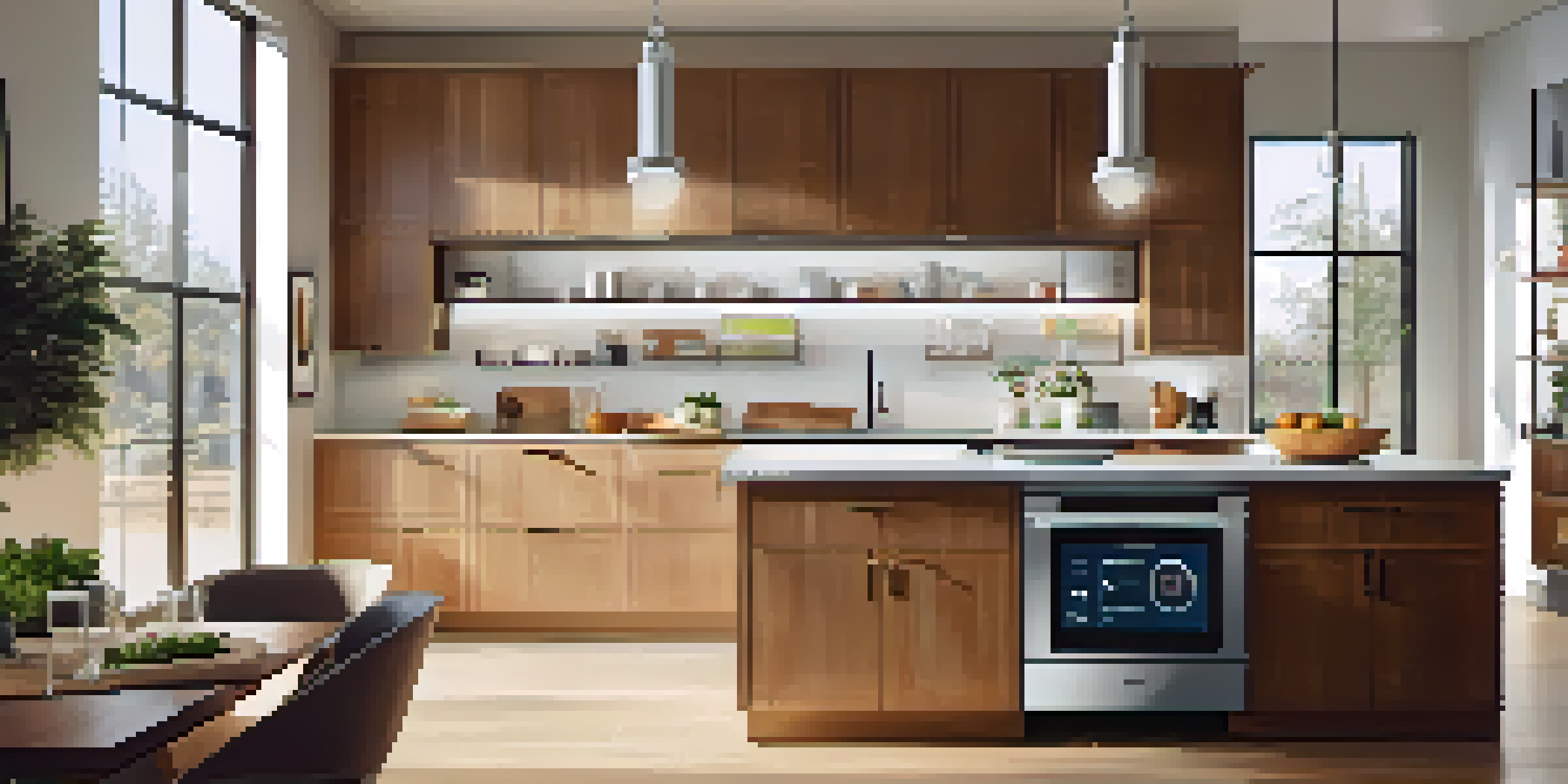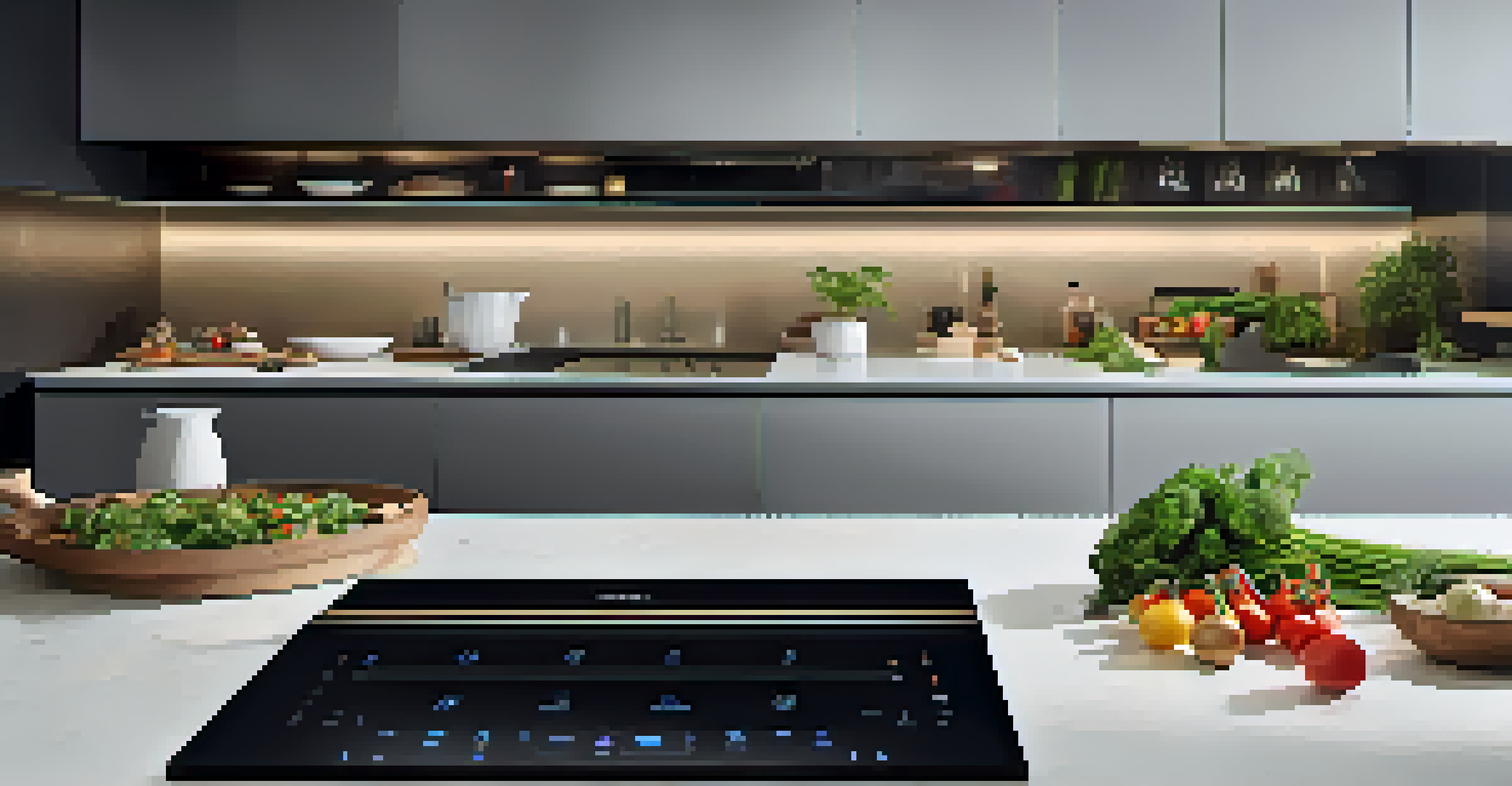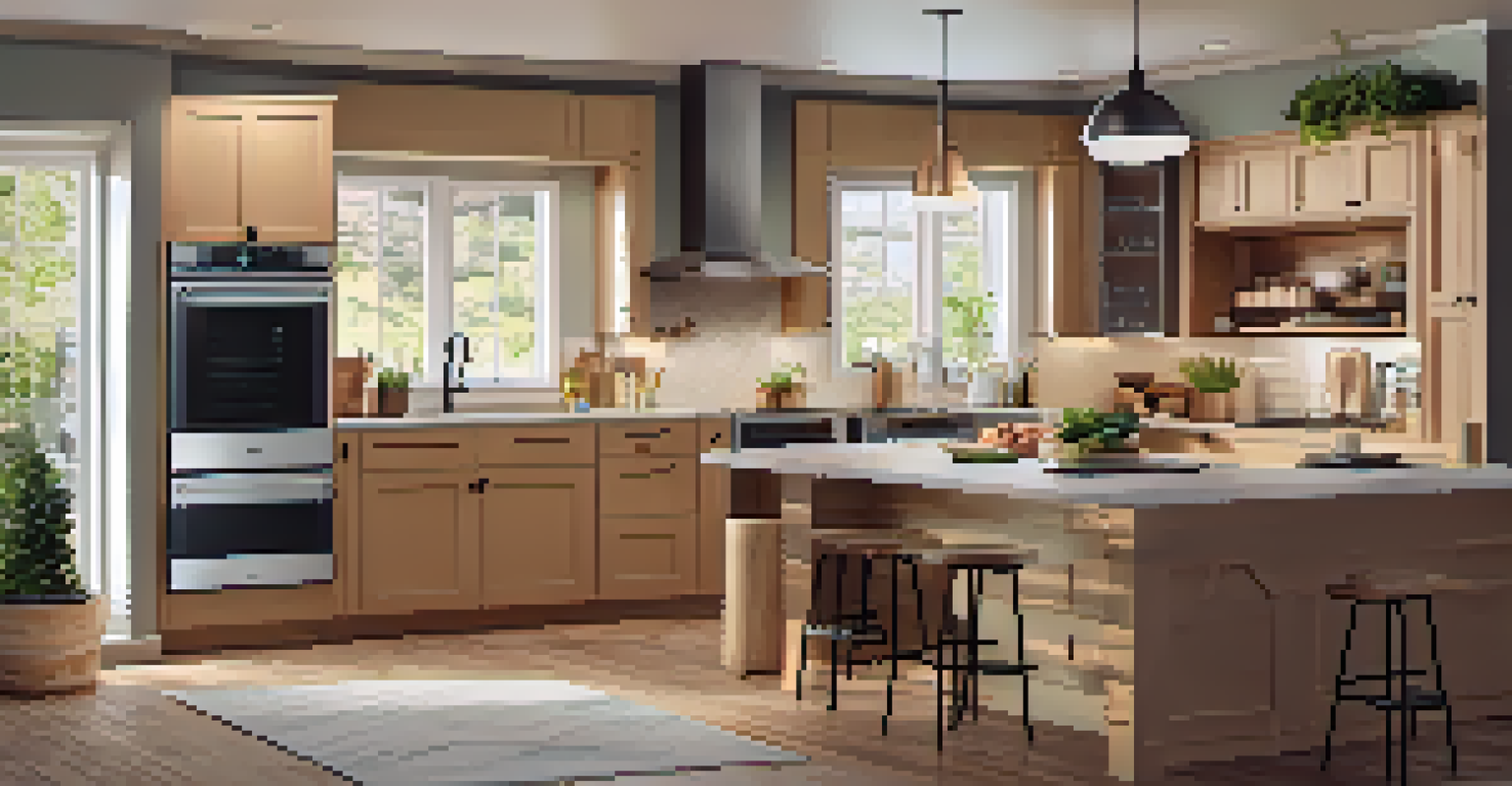The Role of Technology in Future Kitchen Design Trends

Smart Appliances: The Heart of Modern Kitchens
Smart appliances are revolutionizing the way we cook and manage our kitchens. Imagine a fridge that can alert you when you're running low on milk or an oven that can be preheated remotely. These conveniences not only save time but also enhance our cooking experience, making it more efficient and enjoyable.
Technology is best when it brings people together.
The integration of smart technology means that kitchens are becoming more intuitive and responsive. For example, voice-activated devices allow you to control appliances without lifting a finger, which is especially handy when your hands are covered in flour. This seamless interaction helps to create a more pleasant cooking environment.
As we look towards the future, these smart appliances will continue to evolve, with features that anticipate our needs and preferences. The kitchen of tomorrow will be a place where technology and culinary creativity merge, making cooking an even more delightful adventure.
Sustainable Technology: Eco-Friendly Kitchen Innovations
Sustainability is becoming a key focus in kitchen design, with technology leading the charge. Energy-efficient appliances and water-saving fixtures are just the beginning of how tech can help us reduce our environmental footprint. By choosing eco-friendly options, homeowners can make a positive impact while also saving on utility bills.

Smart home systems can monitor energy usage and water consumption, allowing you to make informed choices about your habits. For instance, you might receive alerts when you’re using more energy than usual, prompting you to adjust your habits. This real-time feedback empowers you to be more conscious of your resource consumption.
Smart Tech Enhances Cooking Experience
Smart appliances are revolutionizing kitchens by saving time and making cooking more enjoyable with features like remote access and voice control.
Looking ahead, we can expect even more innovative solutions that prioritize sustainability in kitchen design. From solar-powered appliances to composting systems integrated into our kitchens, the future promises a greener approach to cooking and food preparation.
The Rise of Modular Kitchen Designs with Technology
Modular kitchen designs are gaining popularity due to their flexibility and adaptability, and technology plays a crucial role in this trend. These kitchens can be easily reconfigured to suit changing needs, which is perfect for modern living. As lifestyles evolve, having a kitchen that can adapt without a complete renovation is increasingly valuable.
The kitchen is the heart of the home, and technology is transforming how we connect with it.
With the integration of technology, modular kitchens can incorporate smart storage solutions and customizable layouts. For example, smart cabinets that alert you when items are running low can be strategically placed where you need them most. This level of personalization enhances both functionality and convenience in your cooking space.
As we move forward, expect to see more innovative modular designs that leverage technology to create spaces that are not only beautiful but also highly functional. The kitchen of the future will be both a culinary haven and a tech-savvy environment.
Augmented Reality: Visualizing Kitchen Designs
Augmented reality (AR) is transforming how we visualize kitchen designs before making any commitments. With AR technology, homeowners can see how different layouts, colors, and appliances will look in their actual space, providing a clearer picture of what to expect. This immersive experience can make the design process much more enjoyable and less daunting.
Imagine being able to walk through your future kitchen while still in the planning phase! AR applications allow users to interact with 3D models of their designs, making it easier to experiment with various aesthetics. This not only helps in decision-making but also sparks creativity and inspiration.
Sustainable Choices for Modern Kitchens
Eco-friendly technology is shaping kitchen designs, allowing homeowners to reduce their environmental impact while saving on utility bills.
As AR technology continues to advance, it will likely become an integral part of the kitchen design process. Homeowners will have the tools to create their dream kitchens with confidence, knowing exactly how their choices will come together in real life.
Kitchen Automation: Effortless Cooking Experiences
Kitchen automation is simplifying cooking tasks and making meal preparation more efficient. From automated chopping devices to self-stirring pots, technology is taking over mundane tasks, allowing us to focus on creativity and flavor. This shift not only saves time but also encourages us to try new recipes and cooking styles.
Imagine coming home from a long day and having a meal ready to go, thanks to your automated kitchen. With programmable settings and smart timers, you can set your appliances to cook dishes while you’re away. This convenience is a game changer for busy families and professionals alike.
Looking ahead, kitchen automation will likely expand even further, with advancements in AI and machine learning. These technologies will help us personalize our cooking experiences, making recommendations based on our preferences and dietary needs, ultimately transforming how we approach mealtime.
Integrated Cooking Stations: The Future of Meal Preparation
Integrated cooking stations are becoming a focal point in modern kitchen designs, blending various cooking methods into one cohesive unit. Imagine a countertop that combines induction cooking, grilling, and even sous vide—all in one place. This integration not only saves space but also enhances the cooking experience by providing versatility.
With technology at the helm, these cooking stations can also offer smart features like temperature control and cooking timers. This means that whether you're searing a steak or simmering a sauce, you have the tools at your fingertips to achieve perfect results every time. It’s about making cooking more accessible and enjoyable for everyone.
User-Centric Design Empowers Cooks
Focusing on user-centric design in kitchen technology ensures that spaces are functional and enjoyable, making cooking more accessible for everyone.
As we look to the future, expect more innovative integrated cooking solutions that cater to diverse culinary styles. The kitchen will become a more dynamic space, encouraging exploration and experimentation with new cooking techniques and flavors.
User-Centric Design: Focusing on the Home Cook
User-centric design is a growing trend in kitchen technology, emphasizing the needs and preferences of the home cook. This approach seeks to create spaces that are not only functional but also enjoyable to use. By focusing on the user experience, designers are reimagining how kitchens can better serve those who inhabit them.
For instance, intuitive interfaces on smart appliances make cooking simpler and more accessible for everyone, regardless of skill level. This means you can easily adjust settings, monitor cooking progress, and access recipes without any hassle. Such thoughtful design choices empower more people to engage with cooking and feel confident in their abilities.

As we move forward, user-centric design will continue to shape kitchen trends, ensuring that technology enhances rather than complicates our cooking experiences. The goal is to create kitchens that inspire creativity and foster a love for cooking in every home.